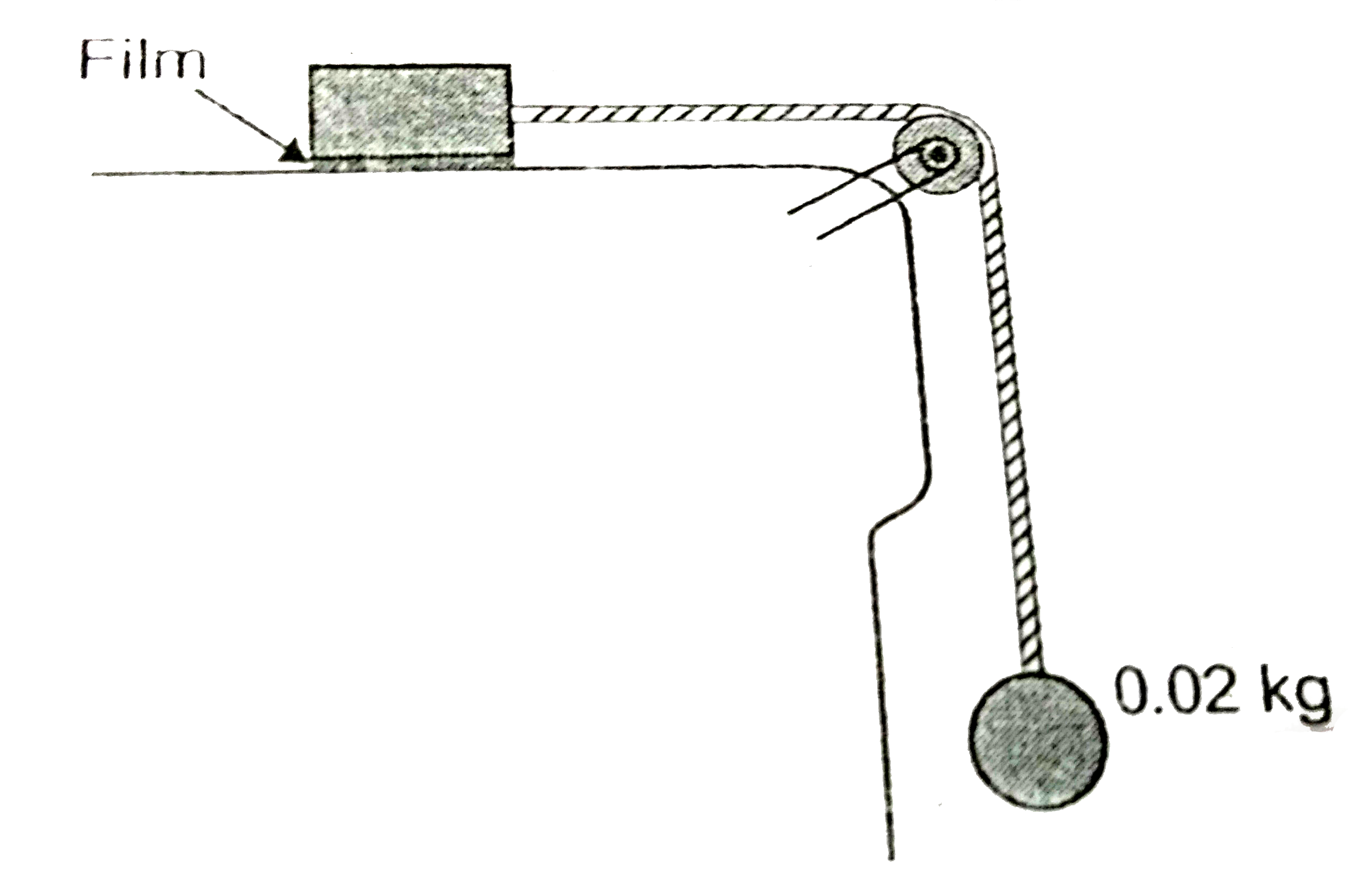A metal plate of area 103 cm2 rests on a layer o oil 6 mm thick. A tangential force of 10−2 N is appled on it to move it with a constant velocity of 6 cm s−1 . The coefficient of viscosity of the liquid is :-
0.1 poise
0.5 posie
0.7 poise
0.9 poise
The correct Answer is:A
To find the coefficient of viscosity (η) of the liquid, we can use the formula for viscous force:
F=η⋅A⋅dvdx
Where:
- F is the tangential force applied (in Newtons),
- η is the coefficient of viscosity (in N s/m2),
- A is the area of the plate (in m2),
- dvdx is the velocity gradient (in s−1).
Step 1: Convert the Area
The area of the plate is given as 103cm2. We need to convert this to square meters:
A=103cm2=103×10−4m2=10−1m2
Step 2: Convert the Thickness
The thickness of the oil layer is given as 6 mm. We need to convert this to meters:
Thickness=6mm=6×10−3m=0.006m
Step 3: Calculate the Velocity Gradient
The velocity of the plate is given as 6 cm/s. We need to convert this to meters per second:
v=6cm/s=6×10−2m/s
The velocity gradient dvdx can be calculated as:
dvdx=vThickness=6×10−2m/s0.006m=10s−1
Step 4: Substitute Values into the Viscosity Formula
Now we can substitute the values into the formula:
F=η⋅A⋅dvdx
Rearranging for η:
η=FA⋅dvdx
Substituting the known values:
F=10−2N,A=10−1m2,dvdx=10s−1
η=10−210−1⋅10=10−210−1⋅10=10−210−1=10−1N s/m2
Final Answer
η=0.1N s/m2
- F is the tangential force applied (in Newtons),
- η is the coefficient of viscosity (in N s/m2),
- A is the area of the plate (in m2),
- dvdx is the velocity gradient (in s−1).
The area of the plate is given as 103cm2. We need to convert this to square meters:
The thickness of the oil layer is given as 6 mm. We need to convert this to meters:
The velocity of the plate is given as 6 cm/s. We need to convert this to meters per second:
Now we can substitute the values into the formula:
η=0.1N s/m2
Topper's Solved these Questions
- BOOK - ALLENCHAPTER - RACEEXERCISE - Basic Maths (Properties of Matter & Fluid Mechanics)(Hydrostatics)20videos
RACE
- BOOK - ALLENCHAPTER - RACEEXERCISE - Basic Maths (Properties of Matter & Fluid Mechanics)(Surface Tension)26videos
RACE
- BOOK - ALLENCHAPTER - RACEEXERCISE - Basic Maths (Properties of Matter & Fluid Mechanics)(Elasticity)20videos
RACE
- BOOK - ALLENCHAPTER - NEWTONS LAWS OF MOTIONEXERCISE - EXERCISE-III28videos
NEWTONS LAWS OF MOTION
- BOOK - ALLENCHAPTER - SIMPLE HARMONIC MOTIONEXERCISE - Example1videos
SIMPLE HARMONIC MOTION
Similar Questions
A metal plate of area5cm2 is placed on a 0.5 mm thick castor oil layer .If a force of 22,500 dyne is needed to move the plate with a velcity of 3cms−1 Calculate the coeffcient of viscosity of castor oil.
View SolutionA metal block of area 0.10 m2 is connected to a 0.02 kg mass via a string. The string passes over an ideal pulley (considered massless and frictionless) as shown in figure. A liquid with a flim of thickness 0.15 mm is placed between the plate and the table. When released the plate movees to the right with a constant speed of 0.075 m s−1. What is the coefficient of viscosity of the liquid?
 View Solution
View Solution
Knowledge Check
- Question 1 - Select One
A metal plate ofarea 100 sq. cm, rests on a layer of oil 2mm thick. A force of 0.1 N applied parallel to the plate horizontally keeps it moving with uniform speed of 1cm/ s. What is the coefficient of viscosity of oil ?
A0.5Ns/m2B1Ns/m2C1.5Ns/m2D2Ns/m2 - Question 2 - Select One
A metal plate of area 500cm92) is kept on a horizontal surface with a layer of oil of thickness 0.5 mm between them. The horizontal force required to drag the plate with a velocity of 2 cm/s is
(coefficient of viscosity =0.9 kg/ms)A180 NB18 NC0.018 ND1.8N - Question 3 - Select One
There is a 1 mm thick layer of oil between a flat plate of area 10−2m2 and a big plate. How much force is required to move the plate with a velocity of 1.5cm/s. The coefficient of viscosity of oil is 1 poise
A1.5×10−3NB1.3×10−5NC1.5×10−2ND1.5×102N
A metal plate 5cm×5cm rests on layer of castor oil 1mm thick whose coefficient of viscosity is 1.55 Nsm−1. Find the horizontal force required to move the plate with a speed of 2cm−1.
View SolutionIf a tangential force of 1dyne cm−2 of the surface is required to maintain a relative velocity of 1cms−1 between two layers of a liquid 1 cm apart, then the coefficient of viscosity of the liquid is said to be___.
View SolutionWhat is the viscous force on the drop of liquid of radius 0.2 mm moving with a constant velocity 4cms−1 throught a medium of viscosity 1.8×10−5Nm−2s.
View SolutionAn external force 6N is applied on a sphere of radius R = 10 cm of mass 1 kg and the sphere moves in a liquid with a constant velocity 5 m/s making 530 with the horizontal.The coefficient of viscosity of the liquid is 20/(6π), in S.I units. (Take g=10m/s2)
 View Solution
View SolutionA metal plate of area 2m2 is pulled horizontally with a velocity of 0.5m−1 on a liquid layer 1mm thick. The force required, if the viscosity of liquid is 12Nsm−2 is
View Solution

